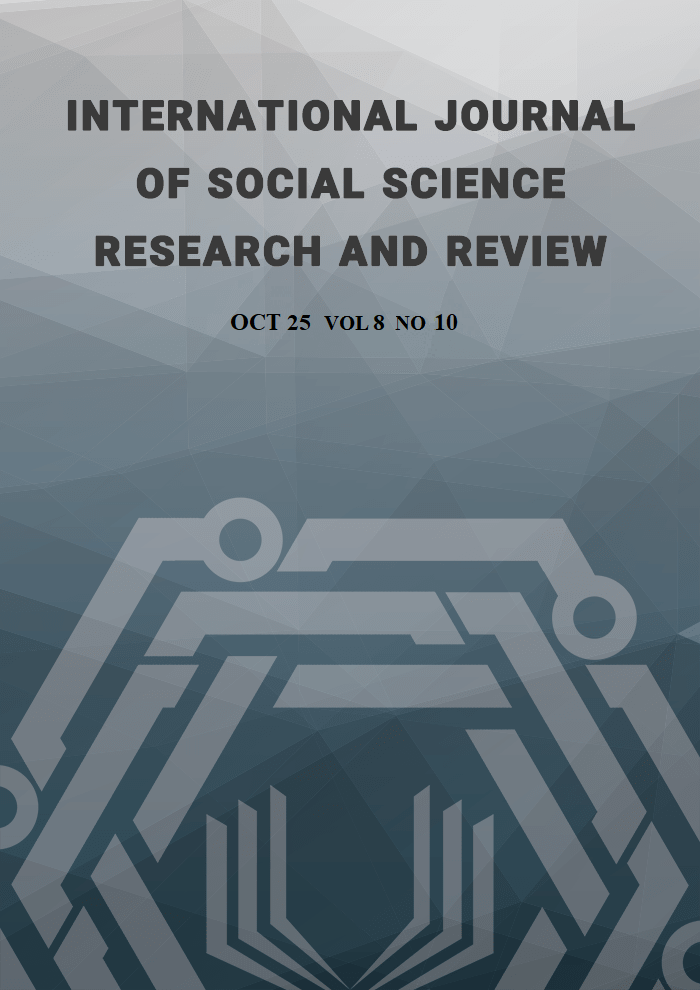The Impact of Counter-Cyclical Fiscal Policies on Employment Rates in South American Countries
Abstract
The paper presents the impact of counter-cyclical fiscal policy implemented during economic crunch in the economies of South America as far as short-term and long-term rates of employment are concerned. The reason behind this is that South America relies on the export of commodities and this aspect combined with political and fiscal instability provide the outcomes of such interventions challenging. The fiscal stimulus in the short term in terms of increased state spending and employment generation has been successful because it has led to the reduction of unemployment since it increases the demand and serves as a cushion to any decrease in the private sector. The employment multipliers in non-tradable are greatest and are bound to rise when prices of good commodities rise to augment the fiscal space. However, the long-term implications can be seen to have structural risks. Sustained reliance on government employment would choke in the investment in the private sector, labor markets and would cause inflationary pressure. Further, the debt accumulation, ineffective institutional capacity, and limited the sustainability of the employment undermine fiscal sustainability. This fact suggests that counter-cyclical policies can reduce unemployment in the short run, but is not likely to produce long-term benefits in terms of increased employment, unless it is accompanied by both structural reform and institutional reinforcement. Lastly, the paper brings out the trade-offs between the short-term stabilization and the long-term economic resilience in the counter-cyclical policies of South America.
References
FGV Repository (2009), “Brazilian Employment Recovery During Financial Crisis”.
ILOSTAT Database: Brazil—Unemployment Rate, 2008–2009
CEPAL, Preliminary Overview… (2009)
Ilzetzki, Mendoza, and Végh, “How Big (Small?) Are Fiscal Multipliers?,” NBER WP 16479, https://www.nber.org/papers/w16479.
Universidad Diego Portales (UDP) Economics Department, Chile’s Economic Response to Global Financial Crisis (Santiago, 2009), structural balance rule and 2008–2009 figures.
International Monetary Fund, Income Distribution and Fiscal Policy in Latin America, IMF Working Paper WP/14/05 (2014), regional inequality trends and fiscal-incidence channels.
International Labour Organization (ILO), Uruguay Employment Dynamics and Capital Productivity (2012), employment trends sections.
CEPAL, The Effects of Fiscal Austerity on Employment in Ecuador (Santiago: United Nations, 2016), executive summary and main tables on expenditure and unemployment, 2015–2016.
[] Organisation for Economic Co-operation and Development (OECD), Public Employment in Latin American Countries (Paris: OECD Publishing, 2015), indicator pages on public-employment shares.
International Monetary Fund, “Why Latin America Needs Lower Deficits and Stronger Fiscal Rules,” IMFBlog, December 18, 2024, https://www.imf.org/en/Blogs/Articles/2024/12/18/why-lac-needs-lower-deficits-and-stronger-fiscal-rules. Social Protection Policy Papers (2009)
International Monetary Fund, Why Latin America Needs Lower Deficits and Stronger Fiscal Rules, IMFBlog, December 18, 2024, https://www.imf.org/en/Blogs/Articles/2024/12/18/why-lac-needs-lower-deficits-and-stronger-fiscal-rules.
CEPAL, Employment Situation in Latin America and the Caribbean: Counter-Cyclical Policies (2010)
Michael Wiseman, “Public Employment as Fiscal Policy,” Brookings Papers on Economic Activity, no. 1 (1976): 67–71.
Morten O. Ravn and Harald Uhlig, “On Adjusting the Hodrick-Prescott Filter for the Frequency of Observations,” Review of Economics and Statistics 84, no. 2 (2002): 371–380, esp. p. 371–372 ( & p. 373–374 on the fourth-power rule, https://home.uchicago.edu/~huhlig/papers/uhlig.ravn.res.2002.pdf.
Nguyen et al., “Negative Effects of State-Owned Banks on the Private Sector,” sec. title, p. 17, ibid.
Reuters, “Brazil raises interest rates 100 bps, sees smaller hike ahead,” Mar. 19, 2025, https://www.reuters.com/markets/rates-bonds/brazil-raises-interest-rates-100-bps-sees-smaller-hike-ahead-2025-03-19/.Allan M. Winkler, “The New Deal: Accomplishments and Failures,” Senate testimony (2009). Winkler, “The New Deal”
Social Protection Policy Papers (2009)
Social Protection Policy Papers (2009)
Social Protection Policy Papers (2009), “Brazil’s Counter-cyclical Response to the Global Crisis”
Venezuela Analysis, “Employment and Social Programs in Venezuela” (2011), employment level and formality shares.
Wiseman, “Public Employment as Fiscal Policy,” 100–106.
Wiseman, “Public Employment as Fiscal Policy,” 78–82.“Public Employment as Fiscal Policy,” 104.Wiseman, “Public Employment as Fiscal Policy,” 67–71, 78–82.Alan J. Auerbach and Yuriy Gorodnichenko, “Measuring the Output Responses to Fiscal Policy,” 2010 working paper version, 2–3, https://eml.berkeley.edu/~ygorodni/AG_fiscal_multiplier.pdf.
World Bank Development Talk (2012), “Falling Inequality: Brazilian Whodunnit”
World Bank, “Growth Returns to Latin America and Counter-Cyclical Policies Increase” (2017)
World Bank, “Growth Returns…” (2017) — primary; Brookings’s article — corroborating
IMF, World Economic Outlook Database, April 2025, indicator GGGD_NGDP (regional aggregate Latin America & Caribbean), accessed Sept. 1, 2025, https://www.imf.org/en/Publications/WEO/weo-database/2025.

This work is licensed under a Creative Commons Attribution-NonCommercial-NoDerivatives 4.0 International License.
Copyright for this article is retained by the author(s), with first publication rights granted to the journal. This is an open-access article distributed under the terms and conditions of the Creative Commons Attribution license (https://creativecommons.org/licenses/by-nc-nd/4.0/).





